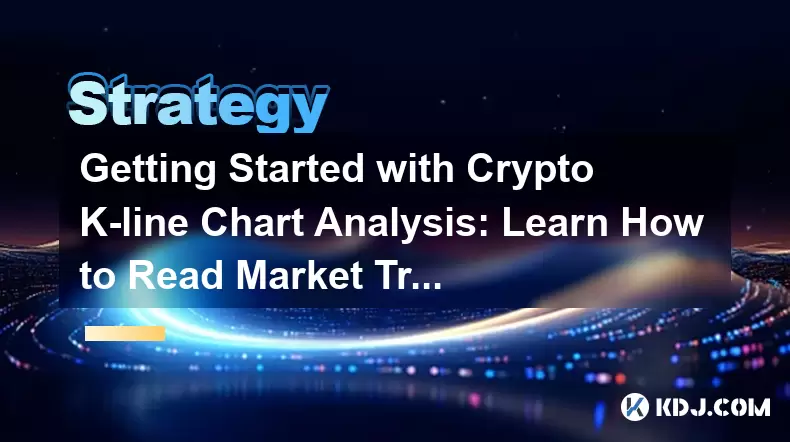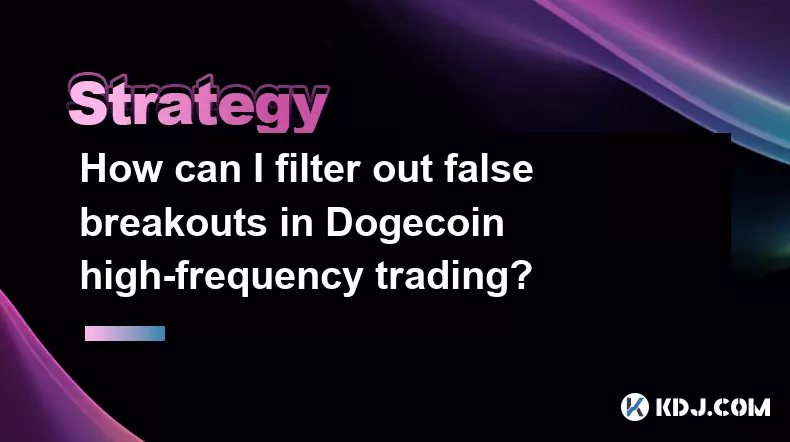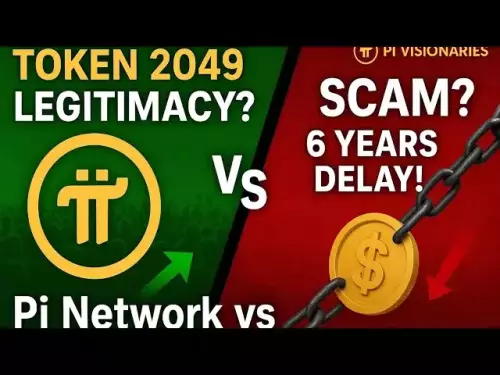-
 bitcoin
bitcoin $114779.865156 USD
2.30% -
 ethereum
ethereum $4226.519789 USD
2.39% -
 tether
tether $1.000545 USD
0.04% -
 xrp
xrp $2.890223 USD
0.92% -
 bnb
bnb $1030.029301 USD
2.95% -
 solana
solana $212.824944 USD
1.69% -
 usd-coin
usd-coin $0.999757 USD
0.01% -
 dogecoin
dogecoin $0.234961 USD
-0.27% -
 tron
tron $0.337174 USD
0.42% -
 cardano
cardano $0.804783 USD
0.09% -
 hyperliquid
hyperliquid $45.748770 USD
-2.85% -
 chainlink
chainlink $21.699170 USD
0.82% -
 ethena-usde
ethena-usde $1.001452 USD
0.08% -
 avalanche
avalanche $30.237800 USD
1.14% -
 stellar
stellar $0.372604 USD
1.52%
Getting Started with Crypto K-line Chart Analysis: Learn How to Read Market Trends from Scratch
K-line charts visually represent cryptocurrency price movements, showing open, high, low, and close prices to help traders identify trends and potential reversals.
Jun 15, 2025 at 01:28 pm

Understanding the Basics of K-line Charts
K-line charts, also known as candlestick charts, are one of the most widely used tools in cryptocurrency trading. They provide a visual representation of price movements over time, showing the open, high, low, and close (OHLC) prices for a specific period. Each candlestick reflects the market sentiment during that timeframe, making it essential for traders to interpret these patterns effectively.
The body of the candle represents the range between the opening and closing prices. If the closing price is higher than the opening price, the candle is usually green or hollow, indicating a bullish trend. Conversely, if the closing price is lower than the opening, the candle appears red or filled, signaling a bearish trend. The thin lines above and below the body, called wicks or shadows, show the highest and lowest prices reached during that period.
Important: A long upper wick indicates strong selling pressure, while a long lower wick suggests buying interest.
Identifying Common Candlestick Patterns
Recognizing candlestick patterns can significantly improve your ability to predict short-term price movements. Some of the most commonly used patterns include:
- Bullish Engulfing: This occurs when a small red candle is followed by a larger green candle that completely engulfs the previous candle’s range, suggesting a potential reversal from a downtrend.
- Bearish Engulfing: The opposite of the bullish engulfing, where a small green candle is overtaken by a larger red candle, signaling a possible shift into a downtrend.
- Hammer: A candle with a long lower wick and a small body at the top, indicating a potential reversal after a decline.
- Shooting Star: Resembles an upside-down hammer and often signals a reversal from an uptrend.
Each pattern should be analyzed in the context of the current trend and volume to increase accuracy.
Reading Volume Alongside K-line Charts
Volume plays a crucial role in confirming the validity of a candlestick pattern. High volume accompanying a particular candle increases the likelihood that the price movement is significant. For example, a bullish engulfing pattern with high volume suggests stronger buyer conviction than one with low volume.
Traders often use indicators like On-Balance Volume (OBV) or Volume Weighted Average Price (VWAP) to further analyze the relationship between price and volume. These tools help identify whether the current price movement is supported by actual market participation.
Important: Always cross-reference volume data before making decisions based solely on candlestick patterns.
Applying Timeframes Effectively
Choosing the right timeframe is critical when analyzing K-line charts. Short-term traders may focus on 5-minute or 15-minute charts for quick trades, while swing traders might look at 4-hour or daily charts to capture broader trends.
It's beneficial to view multiple timeframes to get a clearer picture. For instance, a trader might use a daily chart to determine the overall trend and switch to a 1-hour chart for entry and exit points. Aligning trades with the dominant trend identified in higher timeframes can increase the probability of success.
Key considerations include:
- Consistency of patterns across timeframes
- Confirmation through moving averages or trendlines
- Avoiding conflicting signals from different timeframes
Using Support and Resistance Levels with K-line Analysis
Support and resistance levels act as psychological barriers in price action. When combined with K-line analysis, they can offer powerful insights into potential reversals or breakouts.
A support level is a price point where buying pressure historically outweighs selling pressure, preventing further declines. Conversely, a resistance level is where selling pressure tends to cap upward movement. Traders look for candlestick patterns near these levels to confirm potential reversals or breakouts.
For example:
- A hammer candle forming near a key support level could indicate a strong bounce.
- A shooting star appearing near resistance might suggest an impending pullback.
Drawing horizontal lines at historical support and resistance zones helps visualize these areas more clearly.
Practical Steps to Begin Analyzing K-line Charts
To start practicing K-line chart analysis, follow these steps:
- Select a reliable trading platform such as Binance, KuCoin, or TradingView.
- Choose a cryptocurrency pair you're interested in, like BTC/USDT or ETH/USDT.
- Set the chart to display candlesticks and adjust the timeframe according to your strategy.
- Identify recent candlestick patterns and note their implications.
- Cross-check with volume and support/resistance levels.
- Use drawing tools to mark key levels and annotate your observations.
- Review past charts to see how certain patterns played out historically.
Maintaining a trading journal is highly recommended to track your progress and refine your analytical skills over time.
Frequently Asked Questions
Q: Can K-line analysis work for all cryptocurrencies?Yes, K-line chart analysis applies universally to all tradable assets, including cryptocurrencies. However, less liquid coins may produce misleading signals due to low volume and erratic price swings.
Q: Is K-line chart reading suitable for beginners?Absolutely. While it requires practice, beginners can start by identifying basic patterns and gradually build complexity. Many educational resources are available online to guide new traders.
Q: Do I need special software to read K-line charts?Most cryptocurrency exchanges and trading platforms come equipped with built-in candlestick charting tools. Popular options include TradingView, Binance, and KuCoin, which offer customizable settings and technical indicators.
Q: How accurate is K-line chart analysis?Accuracy depends on context, confirmation from other indicators, and proper interpretation. No method guarantees 100% accuracy, but combining K-line patterns with volume and support/resistance levels enhances reliability.
Disclaimer:info@kdj.com
The information provided is not trading advice. kdj.com does not assume any responsibility for any investments made based on the information provided in this article. Cryptocurrencies are highly volatile and it is highly recommended that you invest with caution after thorough research!
If you believe that the content used on this website infringes your copyright, please contact us immediately (info@kdj.com) and we will delete it promptly.
- AI Training's Energy Crisis: Can Decentralization with Greg Osuri Offer a Solution?
- 2025-09-30 20:45:14
- Crypto Presales: Unlocking Potential 'Buy Now' for 'Presale Gains'
- 2025-09-30 21:05:15
- Prenetics, Danny Yeung, and Token 2049: A Bold Bitcoin Strategy
- 2025-09-30 20:45:14
- Bitcoin Investment in 2025: Navigating the Crypto Landscape
- 2025-09-30 20:50:11
- Pi Network Price Prediction & Crypto News: Navigating the Hype in a Utility-Driven Market
- 2025-09-30 21:05:15
- Dogecoin, Pepe Coin, and Remittix: Meme Mania Meets Utility in the Crypto Wild West
- 2025-09-30 20:50:11
Related knowledge

Practical parameter settings for a Bitcoin multi-timeframe moving average system
Sep 18,2025 at 10:54pm
Optimizing Timeframe Combinations for Bitcoin Trading1. Selecting appropriate timeframes is crucial when building a multi-timeframe moving average sys...

How can I filter out false breakouts in Dogecoin high-frequency trading?
Sep 22,2025 at 01:00am
Understanding False Breakouts in Dogecoin Trading1. A false breakout occurs when Dogecoin's price appears to move beyond a defined support or resistan...

Techniques for identifying tops and bottoms in the Bitcoin on-chain NVT model
Sep 20,2025 at 07:54pm
Understanding the NVT Model in Bitcoin Analysis1. The Network Value to Transactions (NVT) ratio is often described as the 'P/E ratio' of the cryptocur...

What does the surge in open interest in Bitcoincoin futures mean?
Sep 20,2025 at 11:18pm
Understanding the Surge in Dogecoin Futures Open Interest1. A surge in open interest within Dogecoin futures indicates a growing number of active cont...

How can I use the Ethereum USDT premium to gauge market sentiment?
Sep 18,2025 at 11:55pm
Understanding the Ethereum USDT Premium1. The Ethereum USDT premium refers to the price difference between USDT (Tether) traded on Ethereum-based plat...

What should I do if Ethereum staking yields decline?
Sep 20,2025 at 06:18am
Understanding the Causes Behind Declining Ethereum Staking Yields1. The Ethereum network transitioned to a proof-of-stake consensus mechanism with the...

Practical parameter settings for a Bitcoin multi-timeframe moving average system
Sep 18,2025 at 10:54pm
Optimizing Timeframe Combinations for Bitcoin Trading1. Selecting appropriate timeframes is crucial when building a multi-timeframe moving average sys...

How can I filter out false breakouts in Dogecoin high-frequency trading?
Sep 22,2025 at 01:00am
Understanding False Breakouts in Dogecoin Trading1. A false breakout occurs when Dogecoin's price appears to move beyond a defined support or resistan...

Techniques for identifying tops and bottoms in the Bitcoin on-chain NVT model
Sep 20,2025 at 07:54pm
Understanding the NVT Model in Bitcoin Analysis1. The Network Value to Transactions (NVT) ratio is often described as the 'P/E ratio' of the cryptocur...

What does the surge in open interest in Bitcoincoin futures mean?
Sep 20,2025 at 11:18pm
Understanding the Surge in Dogecoin Futures Open Interest1. A surge in open interest within Dogecoin futures indicates a growing number of active cont...

How can I use the Ethereum USDT premium to gauge market sentiment?
Sep 18,2025 at 11:55pm
Understanding the Ethereum USDT Premium1. The Ethereum USDT premium refers to the price difference between USDT (Tether) traded on Ethereum-based plat...

What should I do if Ethereum staking yields decline?
Sep 20,2025 at 06:18am
Understanding the Causes Behind Declining Ethereum Staking Yields1. The Ethereum network transitioned to a proof-of-stake consensus mechanism with the...
See all articles










































































